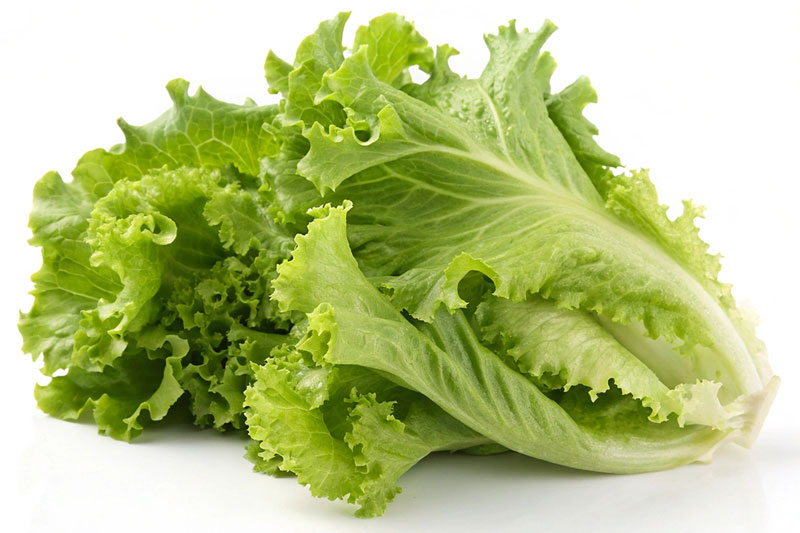Can cats eat lettuce? If you have ever wondered whether your feline friend could munch on some crunchy greens, the answer is, yes, they can! Cats are obligate carnivores, which means their primary diet should consist of meat. However, they can enjoy the occasional nibble of certain vegetables, including lettuce. While lettuce is not toxic to cats, it does not supply the nutrients they need for a healthy and balanced diet. So, while your cat might indulge in a little leafy snack, it’s best not to rely on it as a substantial part of their meals.
Isn’t it interesting how our furry companions can sometimes surprise us with their preferences? Some cats may show an affinity for nibbling on lettuce or munching on plant leaves. It’s like they feel they are joining us at the table, or perhaps they just enjoy the texture. Lettuce itself is mostly water, which might be appealing, especially during hot weather when staying hydrated is essential for their overall health. But remember, just because they can eat it doesn’t mean they should indulge in it regularly.
If you’re curious to learn more about the ins and outs of your cat’s dietary choices, you’re in the right place! We’ll explore how much lettuce is okay, the potential benefits, possible risks, substitutes for those luscious greens, and more. Stick with us as we navigate this leafy topic and ensure your cat’s eating habits are both healthy and safe!
You might also be interested in: Can cats eat Broccoli?
Can Cats Eat Lettuce?

When it comes to lettuce, we might think of a fresh salad, crunchy and delicious. But does that appeal extend to our feline friends? Fortunately, lettuce is safe for cats to eat in small amounts. Cats do not lack the same enzyme processes as humans, which means that while lettuce isn’t harmful, it also doesn’t provide the essential nutrients they require as obligate carnivores. Most cats will try a leaf or two if they see us munching away.
However, we should keep in mind that not all cats are alike. Some may enjoy the crisp texture and fresh flavor, while others might turn their noses up in disapproval. It’s a little surprising how picky our kitties can be, right? If a cat is curious enough to try lettuce, it’s usually best served fresh and clean. Remember to wash it thoroughly to remove any pesticides or contaminants, just like we would for ourselves!
How Much Lettuce Can Cats Eat?
We often ponder, how much lettuce is too much for our cats? It’s important to remember that lettuce should only be an occasional treat, not a primary food source. A small leaf or a few small pieces can suffice. Too much lettuce may cause gastrointestinal upset, leading to diarrhea or vomiting. This is due to their delicate digestive systems and their natural inclination towards protein-rich diets.
As cat owners, we understand that moderation is key. If our feline friend is adventurous enough to try some greens, we can set limits. If they have never had lettuce before, it’s a good idea to introduce it slowly. Observe their reaction. If everything looks fine after they have had a little nibble, that’s excellent! Just remember, even if they enjoyed that nibble today, it doesn’t mean a full salad is in order tomorrow!
Moreover, we might notice that some cats prefer a certain type of lettuce, like romaine or iceberg. Experimenting with different kinds can be fun, but they should only be part of an occasional treat. A few small slices mixed into their regular high-quality cat food can be exciting and confirm that they indeed have adventurous taste buds.
To really keep things interesting, if your cat likes to munch on lettuce, we can also ensure it’s fresh and crunchy. Store the lettuce in the fridge and make sure it stays clean and dry for munching later. Remember, if they seem uninterested, we absolutely shouldn’t force it. Cats have their preferences, and just like us, sometimes they might prefer to stick with the main event – a juicy piece of meat!
Ultimately, we want our furry pals to be healthy and happy. By sticking to this occasional treat and seeing how they react, we can promote a healthy dietary balance for our feline friends. They’ll appreciate the variety, and who knows, it might even spark some playful kitchen adventures when you’re whipping up snacks!
Benefits Of Lettuce To Cats
1. Hydration Factor: One of the notable benefits of lettuce is its hydration factor. Since lettuce is made up of about 95% water, offering your cat a small piece can be refreshing. This hydration boost is especially helpful for cats that may not drink enough water regularly.
2. Fiber Content: Cats can benefit from the fiber content in lettuce. While they primarily need protein, modest amounts of fiber can assist with their digestive health. It can help prevent hairballs and maintain a healthy digestive tract. If your cat is prone to hairballs, lettuce may serve as an added helpful addition to their occasional treat list.
3. Low Calories: Lettuce contains low calories, which can be attractive for a cat’s diet. Offering them a small amount won’t contribute significantly to their daily caloric intake. For those furballs who are getting a little too fluffy, occasional lettuce might help keep that weight in check while introducing some variety.
4. Environmental Enrichment: Some cat owners observe their cats chewing on lettuce as a playful activity. That gnawing and munching can be enjoyable and entertaining, offering environmental enrichment for indoor cats. We definitely want our kitties to stay engaged and intrigued, making their home life more interesting!
5. Strengthen Bond: Last but not the least, sharing food experiences can strengthen our bond with our pets. Watching our cats explore new flavors and textures, like crunchy lettuce, can be a delightful experience! It brings us joy to see their curious personalities emerge as they engage with their food. We are their favorite part of the mealtime ritual!
Dangers Of Feeding Lettuce To Cats
Despite its benefits, there are some risks that we need to be mindful of with lettuce. If our cats consume too much, gastrointestinal distress can occur. This might manifest as vomiting or diarrhea, which can be unsettling for both our pets and us.
We also have to consider the type of lettuce we are offering. Some varieties, like iceberg, have little nutritional value compared to other greens. If our cat chooses iceberg lettuce, they may not receive significant nutrient benefits. Therefore, we need to consider the type and amount before we make it a regular culinary choice.
Another risk is potential pesticide exposure. If we are buying lettuce from a store, washing it thoroughly before letting our cats enjoy it is essential. We don’t want our furry friends consuming any harmful chemicals that could affect their health in the long run.
Also, if your cat has underlying health conditions, especially those affecting their digestive system, consulting with a veterinarian before introducing any new food is crucial. Lettuce can be a safe treat for most cats, but each situation might differ, and it’s always good to play it safe.
As responsible pet owners, we want our cats to enjoy snacking on new things and new experiences. However, keeping a watchful eye on them during these introductions will always help to prevent any potential mishaps!
Substitute Of Lettuce For Cats
1. Green Beans: If we desire to provide our cats with safe and nutritious greens, one great substitute for lettuce might be green beans! They are also low in calories, packed with fiber, and can be a crunchy snack for our kitties. Pureeing cooked green beans could also add a different texture to their food!
2. Catnip: Cats might also enjoy a little catnip. While it doesn’t have the same texture, it can promote a fun interaction and encourage them to play! It’s not hazardous, and we can sprinkle a little on scratchers or in their toys to foster enjoyment.
3. Steamed Carrots Another alternative to explore is steamed carrots. While not every cat prefers them, they can be easily softened, have a distinct flavor, and be incorporated into their meals blending different textures. Luckily, they can also offer some vitamins for added health benefits!
4. Spinach: If you’re looking for garden greens, consider offering small amounts of spinach. Packed with nutrients, it can serve as a wonderful treat, ensuring that it doesn’t become a primary part of their diet. Always pay close attention to how they react and only offer in moderation!
5. Cooked Pumpkin: Lastly, small chunks of cooked pumpkin can also delight our feline friends. High in fiber and taste, this delightful squash can keep our kitties curious and happy! It’s an excellent way to introduce something healthy and potentially delicious for those adventurous eaters.
Can Cats Eat Lettuce? Frequently Asked Questions
Is Lettuce Good For My Cat’s Health?
While lettuce is not harmful to cats, it does not provide the essential nutrients they need. It can serve as an occasional treat rather than a primary food source.
How Much Lettuce Can My Cat Eat?
A small piece or a leaf is sufficient for a cat. Too much lettuce could lead to digestive upset, so moderation is key.
Are There Any Types Of Lettuce That Cats Should Avoid?
It’s best to avoid iceberg lettuce, as it lacks nutritional value. Romaine or dark leafy greens provide more benefits.
What Are Alternatives To Lettuce For My Cat?
Green beans, catnip, and cooked pumpkin can be good alternatives that can vary their diet while ensuring they receive beneficial nutrients.
Is It Safe To Give My Cat Lettuce Every Day?
Feeding your cat lettuce daily is not recommended. It should only be an occasional treat given its limited nutritional value.
Final Thoughts
So, there you have it! We can safely conclude that while cats can eat lettuce, it should not be a regular part of their diet. Cats are unique creatures with fascinating preferences, and as responsible pet owners, we should focus on providing them with suitable, high-quality food that caters to their dietary needs. After all, our furry friends deserve the best! If you’d like to explore more about our fur babies and their eating habits, feel free to check out some of our other resources about what cats can and cannot eat. From chocolate to pineberries, we have you covered! Let’s keep our kitties happy and healthy together!
Ready for some more reading? Explore these articles to learn more: Pet Care Blog, Cats and Sunflowers, and Cats and Okra.


